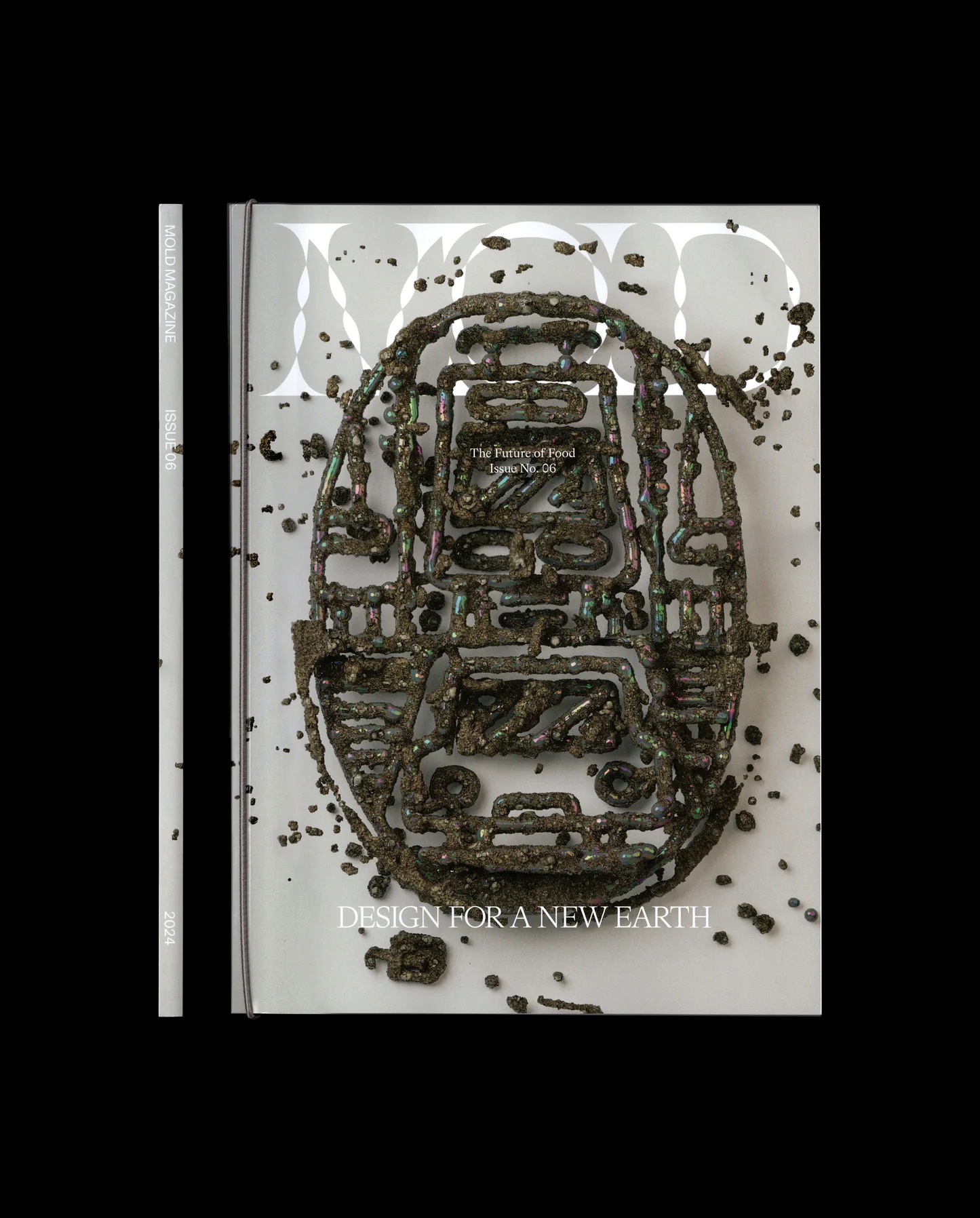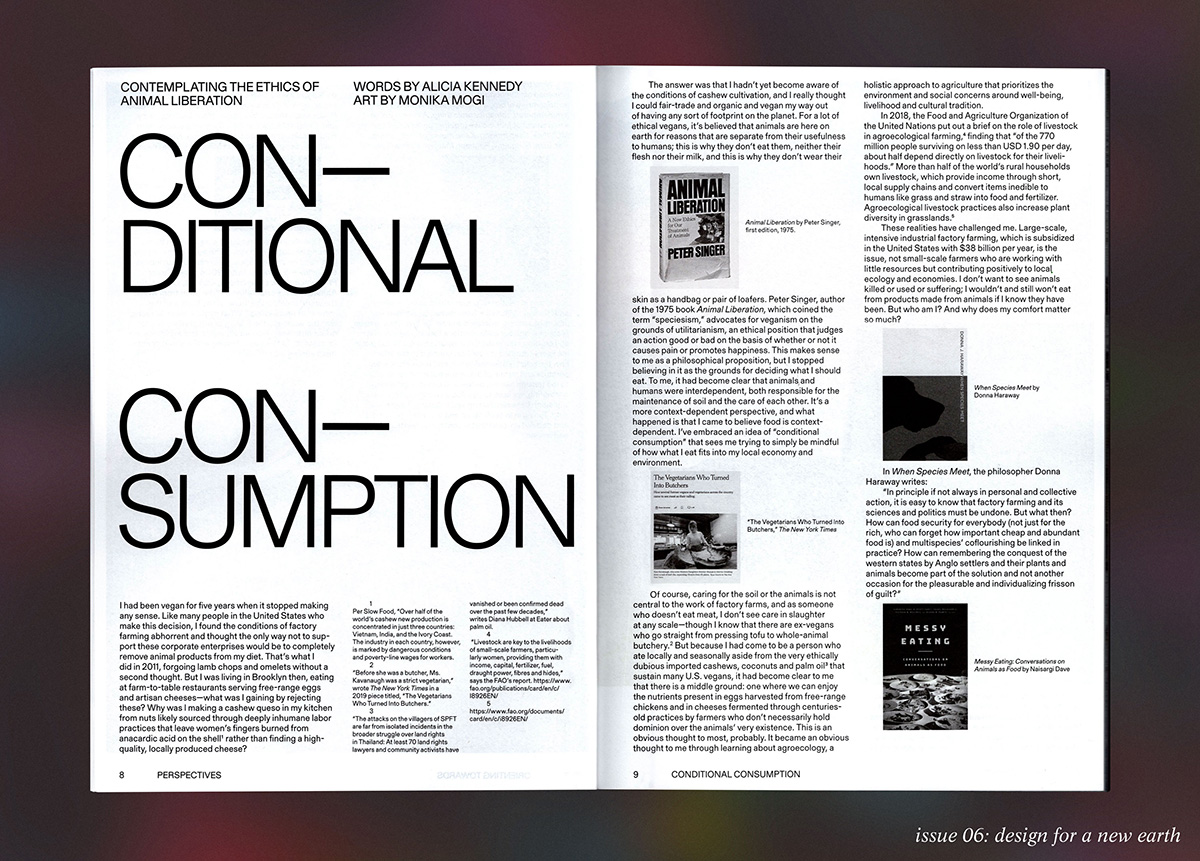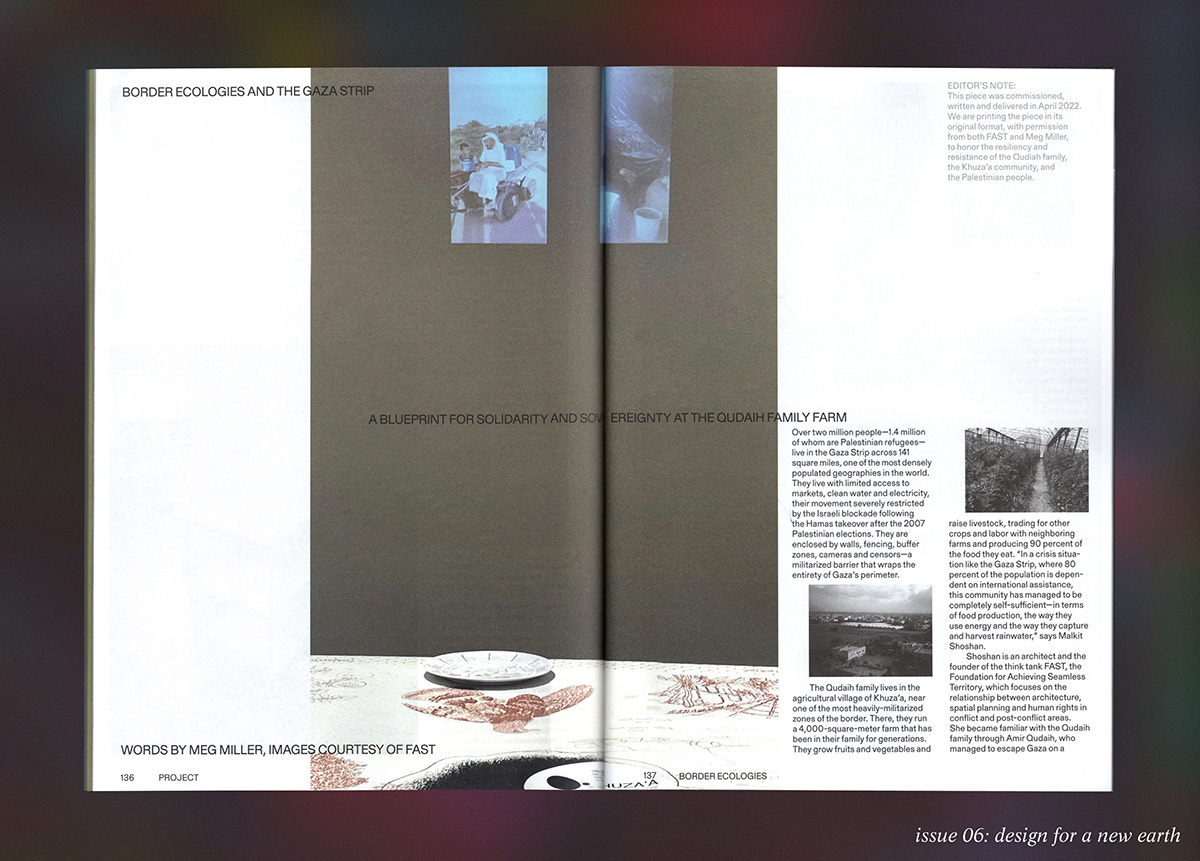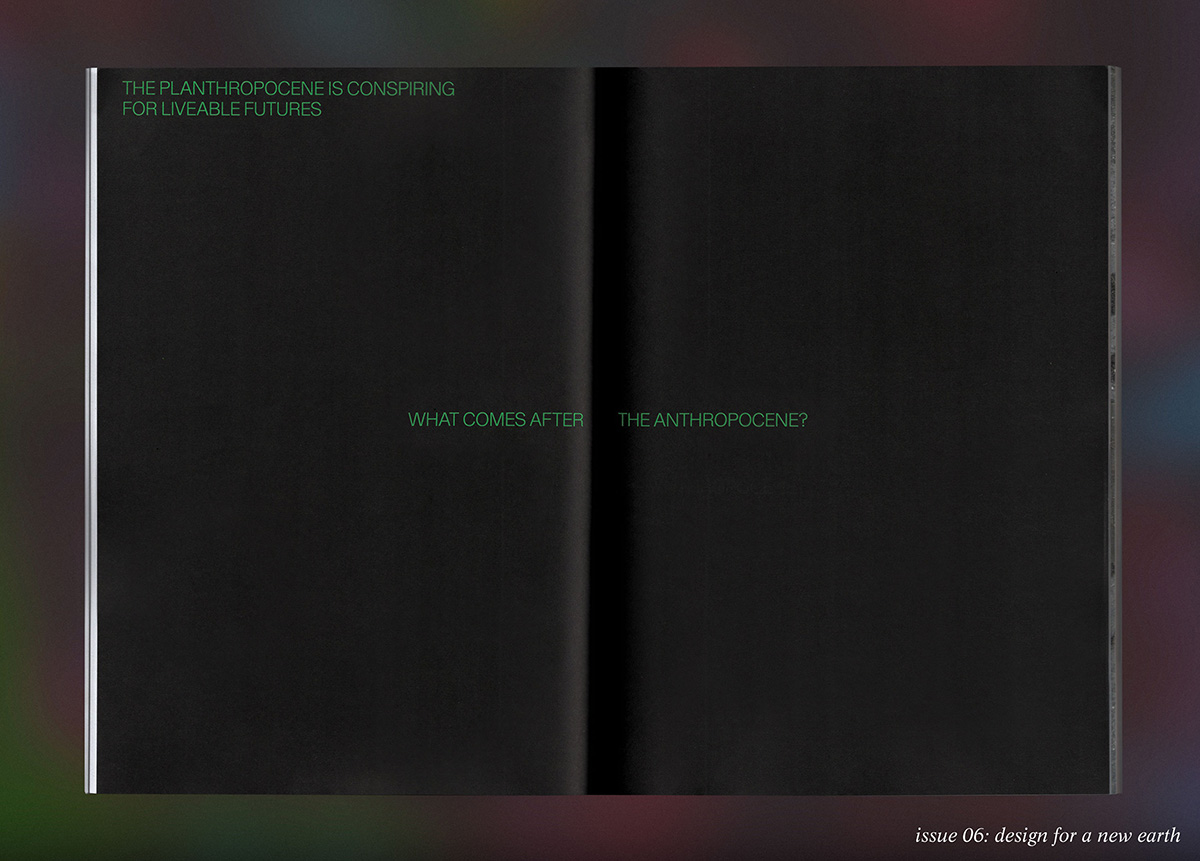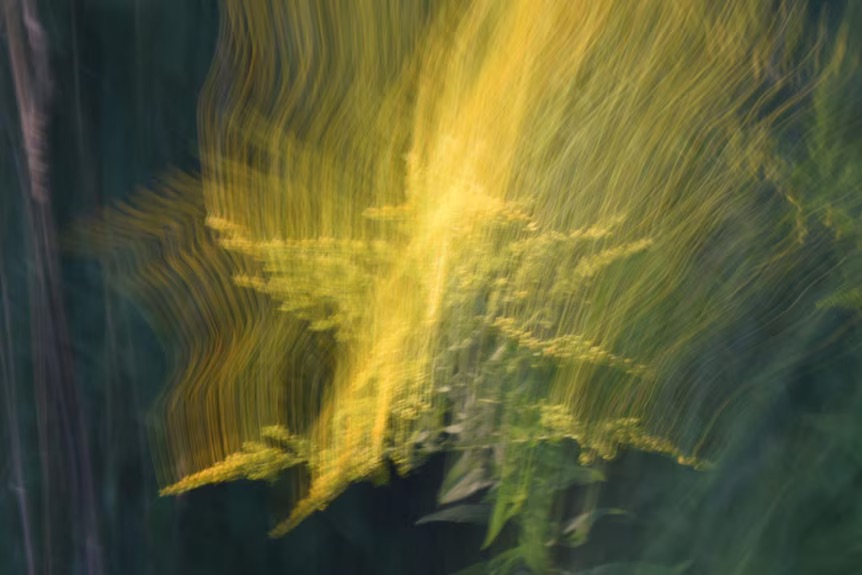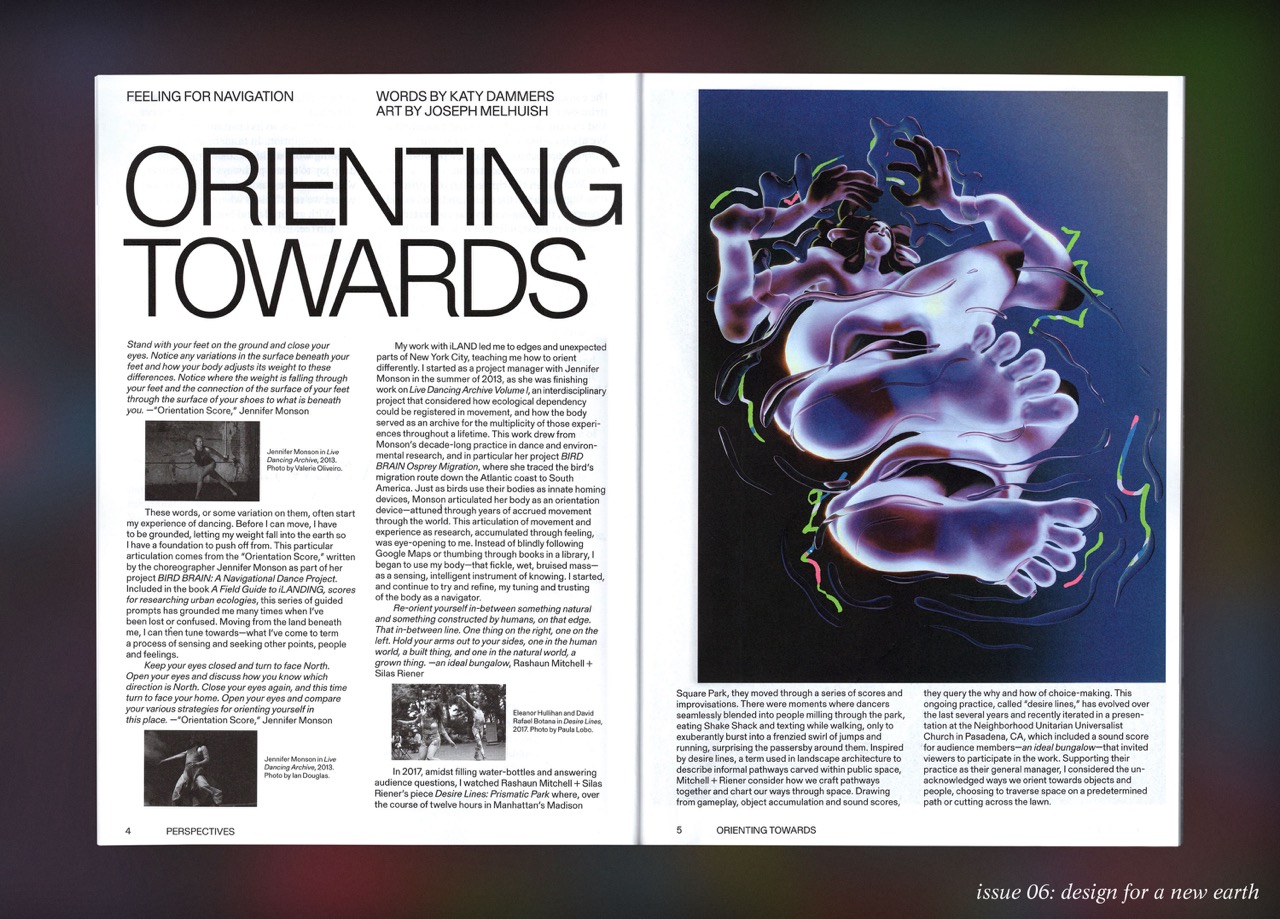This essay is from the forthcoming print issue of MOLD magazine, Design for a New Earth. Pre-Order your copy here.
We are living in portal times. We are birthing new worlds. In our final print issue of MOLD, we return to the microbial scale by focusing on designing new earths on this Earth: to spark new imaginaries, forge new relationships, and most importantly, ground ourselves in the soil.
We engage with soil every time we eat. In a conversation with Evan Kleinman on the Good Food podcast, the agronomist and World Food Prize laureate Dr. Rattan Lal reminds us that soil is a living entity and “the only place in the universe…that has the divine power to convert death into life.” Taking this as a starting point, we believe that by reimagining our extractive relationship with the Earth’s soil to one where we treat it as a living, dynamic entity, we have an opportunity to cultivate an interspecies consciousness that will center on living cycles and prepare us to bring forth new ways of being.
Our food web is the web of life. At-risk pollinators facilitate fertilization in flowering plants, animals and plants recycle nutrients from living organic matter, and microbial masses do so from “dead” matter. We’d have nothing to eat without these collaborators. This interdependence with other living systems has long been recognized by Indigenous communities, who possess knowledge of the lands and their more-than-human inhabitants, which they have stewarded for millennia. In shifting towards a more intimate food ecology, design can amplify this knowledge and center ways of knowing that recognize just how reliant we are on others. The food system is not separate from other living systems; it is those things. As the seed activist Vandana Shiva reminds us, “the future of food depends on remembering that the web of life is a food web.”
It’s been two years since we first started working on this final issue and almost seven years since we funded this print project through Kickstarter. The world feels different now but its ills are still deeply rooted in an extractive, interlocking system of what bell hooks identified as the “imperialist white supremacist capitalist patriarchy.”
The work continues to uproot, unmake, and unravel these systems, clearing the ground “so that,” as Jamer Hunt prompts, “more than one just future can emerge.” Our vision of freedom begins with a return to, and of, the land.
I’ve learned many lessons from the process of making MOLD but perhaps the most valuable is that of universal timing. Each issue has arrived on time—its own time—despite best efforts to prod and push according to self-inflicted deadlines. An equally important lesson has been that of collaboration. Magazine making, by its nature, is a collaborative endeavor. In 2016 I cold called Eric Hu and Matt Tsang with an idea to make the debut issue of a magazine about the future of food. I met Johnny Drain at a butter meet-up in London and pitched him on the idea of co-editing the first issue—his knowledge of cooking balanced my design perspective. Jena Myung joined us halfway through. Although we had agreed to make a single issue, here we are at the end of this project having done it together. We’ve made this magazine through world-shifting events both planetary and personal—war, pandemic, awakenings, births, weddings, deaths, moving homes, moving cities. We have been able to maintain true editorial independence over the course of the process—it remains entirely advertising free; I still ship magazines from my home in Brooklyn. Through six issues, we have commissioned and published the work of hundreds of incredibly thoughtful, kind, brilliant and creative people. We started and ended together.
What happens next? Our work continues online at thisismold.com and in person through our sister organization, Field Meridians (fieldmeridians.org). By asking our neighbors what the future of food should look like in Crown Heights, Brooklyn, Field Meridians is expanding the conversation we’ve had online and in print over the past decade through MOLD, and rooting deeper in our local community. We are building a beloved community through project-based works, a publishing arm, and a pirate radio station.
We’ve seen the ripples that our print offering has had in the design and food worlds. Together, this community has cultivated a deeper understanding of how we can be in right relationship with the food we eat and those human and more-than-human forces that contribute to its creation, distribution, and consumption. In tandem with our ongoing work at thisismold.com, it’s been a deep joy to create pathways for discourse where there were none before. This is not where we end. This is where we begin.
With gratitude and hope,
LinYee, Eric, Jena, Johnny, and Matt
